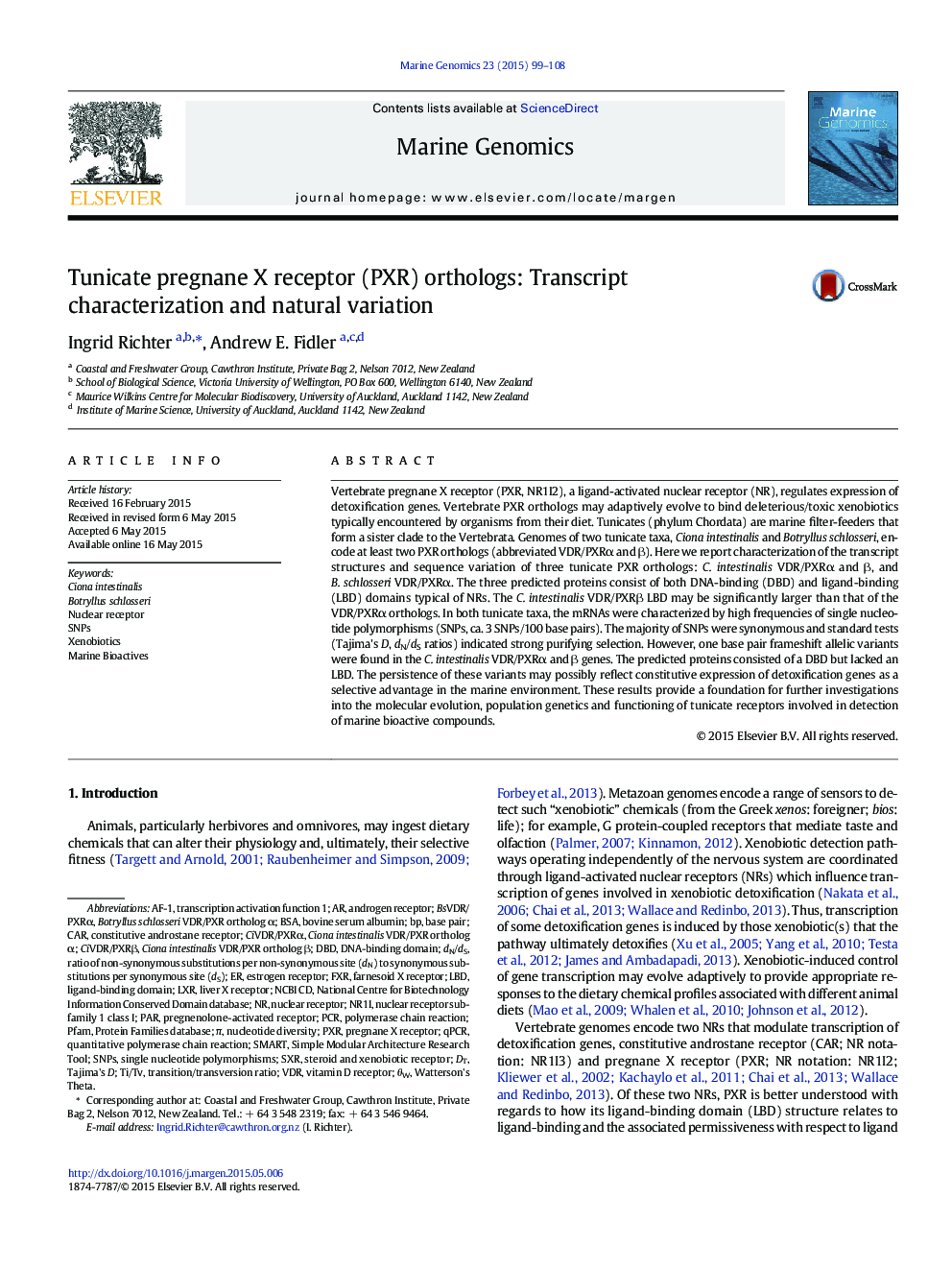| Article ID | Journal | Published Year | Pages | File Type |
|---|---|---|---|---|
| 8388431 | Marine Genomics | 2015 | 10 Pages |
Abstract
Vertebrate pregnane X receptor (PXR, NR1I2), a ligand-activated nuclear receptor (NR), regulates expression of detoxification genes. Vertebrate PXR orthologs may adaptively evolve to bind deleterious/toxic xenobiotics typically encountered by organisms from their diet. Tunicates (phylum Chordata) are marine filter-feeders that form a sister clade to the Vertebrata. Genomes of two tunicate taxa, Ciona intestinalis and Botryllus schlosseri, encode at least two PXR orthologs (abbreviated VDR/PXRα and β). Here we report characterization of the transcript structures and sequence variation of three tunicate PXR orthologs: C. intestinalis VDR/PXRα and β, and B. schlosseri VDR/PXRα. The three predicted proteins consist of both DNA-binding (DBD) and ligand-binding (LBD) domains typical of NRs. The C. intestinalis VDR/PXRβ LBD may be significantly larger than that of the VDR/PXRα orthologs. In both tunicate taxa, the mRNAs were characterized by high frequencies of single nucleotide polymorphisms (SNPs, ca. 3 SNPs/100 base pairs). The majority of SNPs were synonymous and standard tests (Tajima's D, dN/dS ratios) indicated strong purifying selection. However, one base pair frameshift allelic variants were found in the C. intestinalis VDR/PXRα and β genes. The predicted proteins consisted of a DBD but lacked an LBD. The persistence of these variants may possibly reflect constitutive expression of detoxification genes as a selective advantage in the marine environment. These results provide a foundation for further investigations into the molecular evolution, population genetics and functioning of tunicate receptors involved in detection of marine bioactive compounds.
Keywords
Tajima's DPfamFXRCiona intestinalisSteroid and xenobiotic receptorVDRAF-1SNPsBotryllus schlosseriLBDDBDqPCRLXRSXRPXRBSAdN/dSfarnesoid X receptorbovine serum albuminSimple modular architecture research toolXenobioticsNucleotide diversityParbase pairDNA-Binding Domainligand-binding domainCARSMARTpolymerase chain reactionquantitative polymerase chain reactionPCRSingle nucleotide polymorphismsliver X receptorconstitutive androstane receptorAndrogen ReceptorEstrogen receptorVitamin D receptorPregnane X receptorNuclear receptor
Related Topics
Physical Sciences and Engineering
Earth and Planetary Sciences
Earth and Planetary Sciences (General)
Authors
Ingrid Richter, Andrew E. Fidler,
